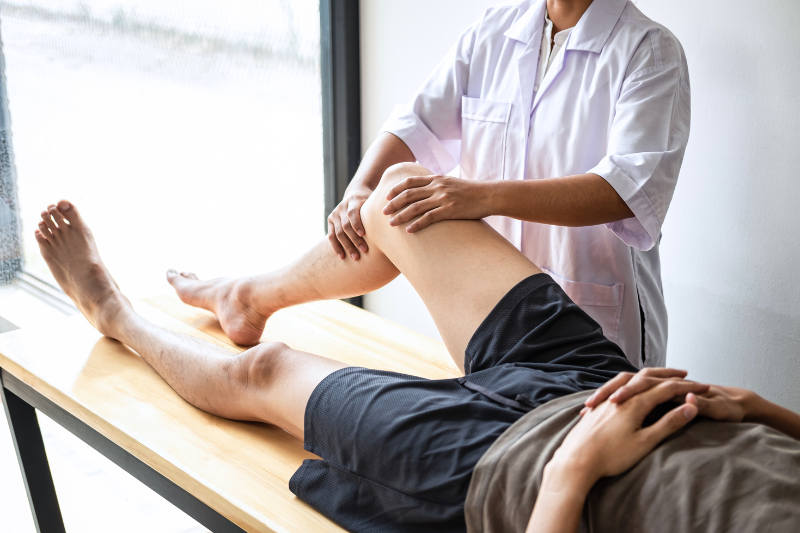Fascial Stretch Therapy: Boosting Flexibility and Reducing Pain
Fascial Stretch Therapy (FST) has gained popularity in alternative therapies for improving flexibility, reducing pain, and enhancing overall well-being. This approach targets the body’s fascia, aiming to alleviate stiffness, improve range of motion, and reduce discomfort. In this article, we explore the principles, techniques, and potential benefits of FST.
Understanding Fascial Stretch Therapy
Therapists use FST as a manual therapy technique to target the fascia, a complex web of connective tissue that surrounds muscles, bones, and joints throughout the body. Unlike traditional stretching, which often involves isolated muscle groups, FST takes a holistic approach, targeting the entire fascial network to enhance mobility and flexibility.
The fascia plays a crucial role in maintaining structural integrity, providing support to muscles and organs, and facilitating movement. Over time, due to factors such as aging, injury, or prolonged periods of inactivity, the fascia can become tight, leading to restrictions in movement and potential discomfort.
FST is performed by trained practitioners who use a combination of traction, gentle stretching, and mobilization techniques to release tension within the fascial system. This therapeutic approach is highly individualized, with practitioners assessing each client’s unique needs and tailoring the session accordingly.
Techniques Employed
- Traction and Joint Distension: FST often begins with gentle traction to create space in the joints and allow for increased mobility. This technique helps to reduce compressive forces within the joints, promoting a more fluid range of motion.
- PNF Stretching: Practitioners use Proprioceptive Neuromuscular Facilitation (PNF) techniques in FST to enhance flexibility. These involve a combination of contraction and relaxation of targeted muscles, encouraging the body to adapt to increased stretch without triggering a protective response.
- Dynamic Stretching: Unlike static stretching, where you hold a position for an extended period, dynamic stretching involves continuous movement. FST incorporates dynamic stretching to improve flexibility, balance, and coordination.
- 3-Dimensional Movement: FST recognizes that the body moves in three dimensions. Practitioners employ multi-planar stretches to address fascial restrictions comprehensively, promoting flexibility in all planes of movement.
Benefits of Fascial Stretch Therapy
- Improved Flexibility and Range of Motion: One of the primary goals of FST is to enhance flexibility by targeting the fascial system. Clients often experience an increased range of motion in joints, allowing for smoother and more comfortable movement.
- Pain Reduction: Tight fascia can contribute to chronic pain and discomfort. FST aims to alleviate pain by releasing tension within the fascial network, promoting better alignment and reducing strain on muscles and joints.
- Enhanced Athletic Performance: Athletes can benefit significantly from FST as it improves flexibility, agility, and overall functional movement. By addressing fascial restrictions, athletes may experience improved performance and reduced risk of injuries.
- Postural Improvement: Tight fascia often causes poor posture. FST helps to address postural imbalances by releasing tension in specific areas, allowing the body to achieve better alignment.
- Stress Reduction: The gentle and relaxing nature of FST can have positive effects on the nervous system, promoting a sense of relaxation and reducing stress levels. This mind-body connection is integral to the overall well-being of individuals seeking FST.
- Rehabilitation and Injury Prevention: Practitioners often use FST in rehabilitation settings to aid in recovery from injuries. It can prevent issues by identifying and addressing fascial restrictions early.
Fascial Stretch Therapy vs. Traditional Stretching
Traditional Stretching:
- Static Stretching: Involves holding a specific position for a period.
- Targeted Approach: Increases flexibility and range of motion in specific muscles or muscle groups.
- Self-Performed: Individuals can do this on their own with the use props such as straps or blocks.
Fascial Stretch Therapy:
- Assisted Stretching: Uses traction and movement to target the fascia.
- Holistic Approach: Increases mobility and flexibility, reduces pain, and improves posture.
- Personalized sessions: Therapist uses gentle stretching to gradually release fascial tension.
The Takeaway
Fascial Stretch Therapy emerges as a promising approach in the realm of manual therapies, offering a holistic and individualized method to improve flexibility, reduce pain, and enhance overall well-being. As more individuals seek alternative and complementary therapies to support their health and fitness goals, FST stands out for its focus on the interconnected web of fascia that plays a vital role in our body’s structural integrity and movement patterns. Whether used for athletic performance enhancement, pain management, or overall flexibility improvement, FST provides a unique and effective approach to promoting optimal physical function and well-being.
For those interested in exploring Fascial Stretch Therapy in Markham, it is often covered under physiotherapy or chiropractic services at specialized clinics like Form & Function. Our skilled physios, chiros, and massage therapists are trained to provide FST, making it a valuable addition to your wellness routine, offering both immediate and long-term benefits for your physical and mental health.
Book with Atlee to experience the benefits of Fascial Stretch Therapy!

